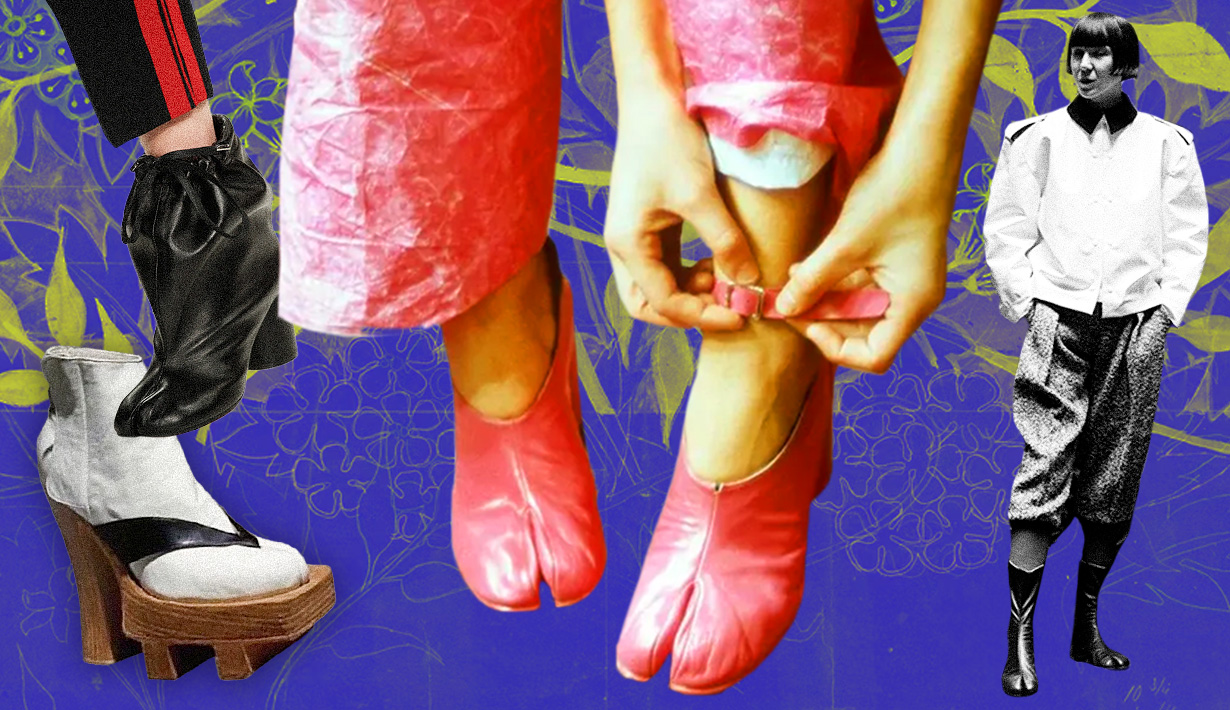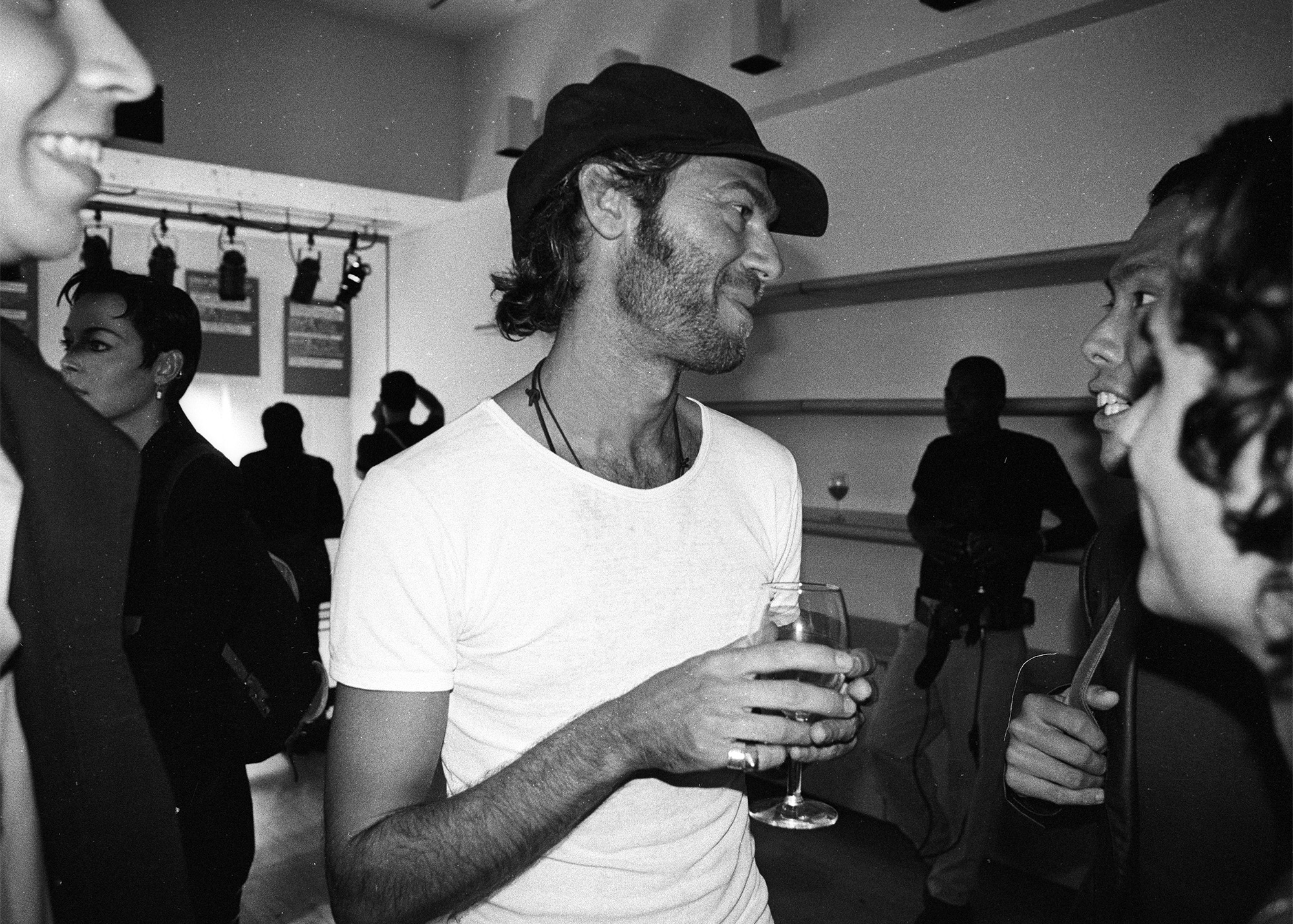Inventor of Margiela Tabi: Who is Martin Margiela and how did he invent Tabi?
Margiela, also known as the founding father of anti-fashion, organized a fashion show that had never been seen before in an abandoned playground on the outskirts of Paris. There were no guests at his first fashion show. "First come, first seated," he said. Later...

One autumn many years ago, Martin Margiela organized a fashion show that had never been seen before in an abandoned playground on the outskirts of Paris. There were no guests at his first fashion show. "First come, first seated," he said. For his Spring/Summer 1989 collection, he laid out a white fabric on the catwalk. At the end of the show, models walked in lab coats, and Margiela Tabis with red paint on the soles. They left behind almost alien traces with every step they took. (The most familiar footprints in fashion today.) Margiela Tabis received reactions confirming that something special had been created. Some fell in love with its silhouette, some thought it was the ugliest thing they had ever seen. But no one could take their eyes off them... In the following seasons, Tabi was always present at Margiela's fashion shows. It was out of necessity rather than choice; Creating a new shoe was over budget. So how did these shoes become first the symbol of anti-fashion and then the iconic silhouette of fashion?
Martin Margiela (born 9 April 1957) is a Belgian fashion designer, artist, and founder of French luxury fashion house Maison Margiela. Throughout his career, Margiela has maintained a low profile, refusing to grant face-to-face interviews or be photographed. Since leaving fashion in 2009, he has emerged as an artist, exploring the themes that made him an iconic figure in fashion. He is considered to be one of the most influential fashion designers in recent history for his iconic deconstructed, upcycled aesthetic and oversized silhouette.
So how did these shoes become first the symbol of anti-fashion and then the iconic silhouette of fashion?

Of course, although we cannot think of its silhouette separately from Margiela, it is not Martin who created this style. Of course, its design originates in 15th century Japan. At first, it resembles a cotton bootie; Over time, it takes the form of separating the thumb from the other fingers so that it can be used with traditional Japanese slippers (zori and geta). It comes to life again and again with different materials, gaining rubber soles (jika-tabi). At one point, his path crosses with soldiers in World War II. The Yoshin Ryu jujutsu uniform becomes part of the Okinawan dances performed at the Bon Festival. 1951 Boston Marathon racer Shigeki Tanaka takes first place wearing split-toe Onitsuka Tiger running shoes inspired by Tabi. Then... Tabi's design, which prioritizes flexibility, comfort, and balance, meets Martin Margiela.
"You can imagine the stress that creating an unprecedented shoe would create. You're going a little crazy." As Martin reflects on his first visit to Tokyo, he remembers workers wearing Tabi on the street. And he imagines the classic pattern with heels. The idea arises from here. "I wanted to create an invisible shoe; to give the illusion of walking barefoot on high and thick heels..."
When the split-toe design he wanted for Margiela's first collection was deemed too radical by the shoemakers, Martin went on a long-term search for a shoemaker. At that moment, his path crosses again with Geert Bruloot. His boutique, Cocodrillo, is the first to stock shoes that Martin worked on before Jean Paul Gaultier. Bruloot brings Martin together with the master he is looking for; An Italian craftsman named Mr Zagato. Mr. Zagato sees the Tabi prototype at dinner and his eyes light up.
And he does. They take an existing silhouette and put it on heels. Margiela is quickly gaining recognition for its design reminiscent of human-animal hybrid feet. He inspires extraordinary characters with his extraordinary approach to fashion.
By placing an unusual distance between the big toe and the other fingers, Margiela impressed people with his design. Even though their status today is no longer experimental and they appeal to a wider audience, Tabi shoes prove that they have not lost any of their appeal since the first day they stepped on the podium.
Until recently, Margiela Tabis was known as the choice of those who had a bold relationship with fashion. But since "the art of self-expression" has replaced courage in fashion, these iconic shoes have become more talked about. So, if we want, we can look at social media's excitement from a positive perspective. Leaving aside the conservative attitude, we can enjoy the fact that a holistic and functional design that has gone back centuries can still inspire people to the point it has reached today.
Margiela, who is also known as the founding father of anti-fashion, said after parting ways with the brand in 2008, "I felt that I could not cope with the increasing pressure around the world and the growing demands of trade. Social media is overloaded with information, destroys the 'excitement of waiting' and is very difficult for me." "I cannot accept that it eliminates the fundamental surprise effect," he said.
